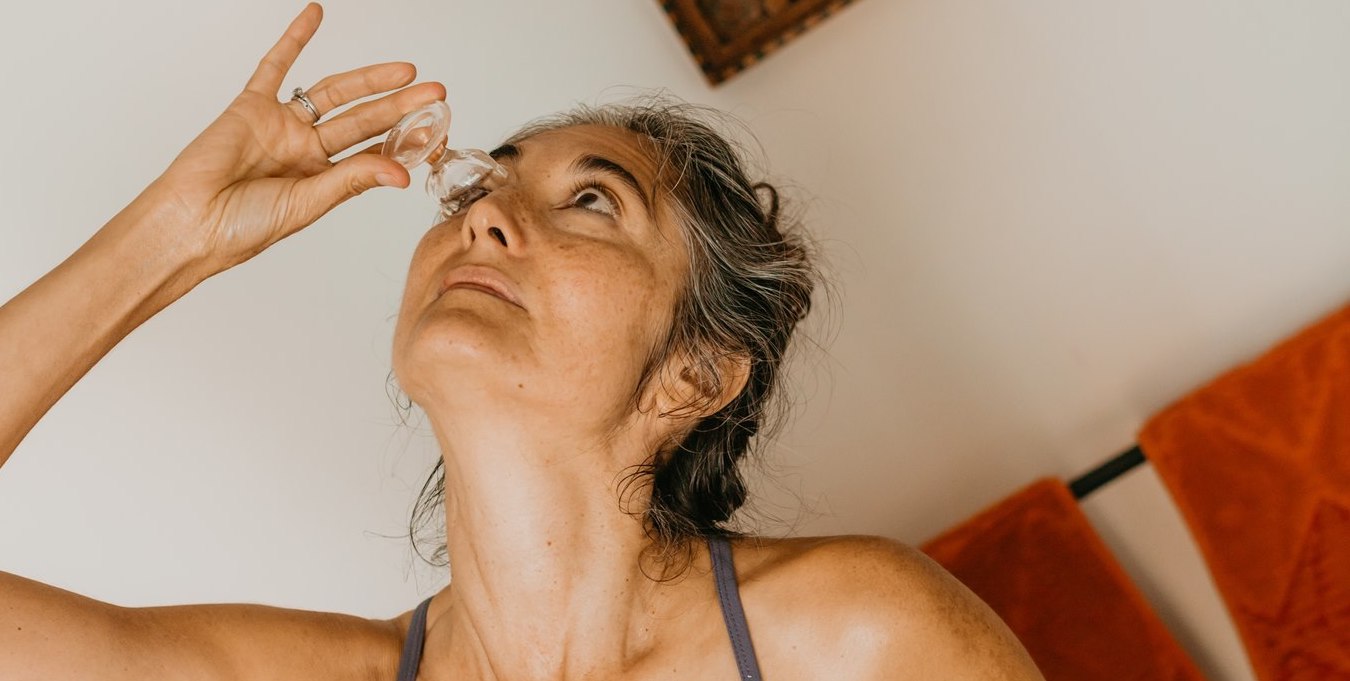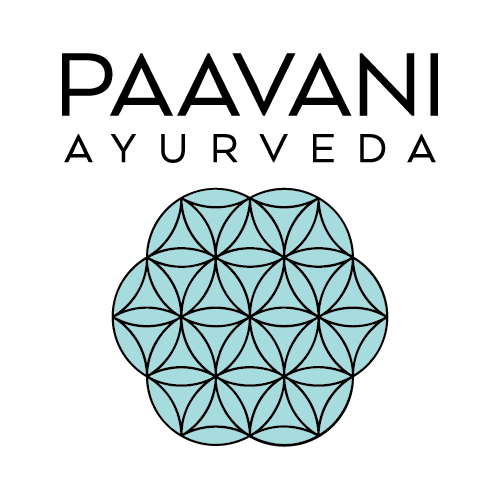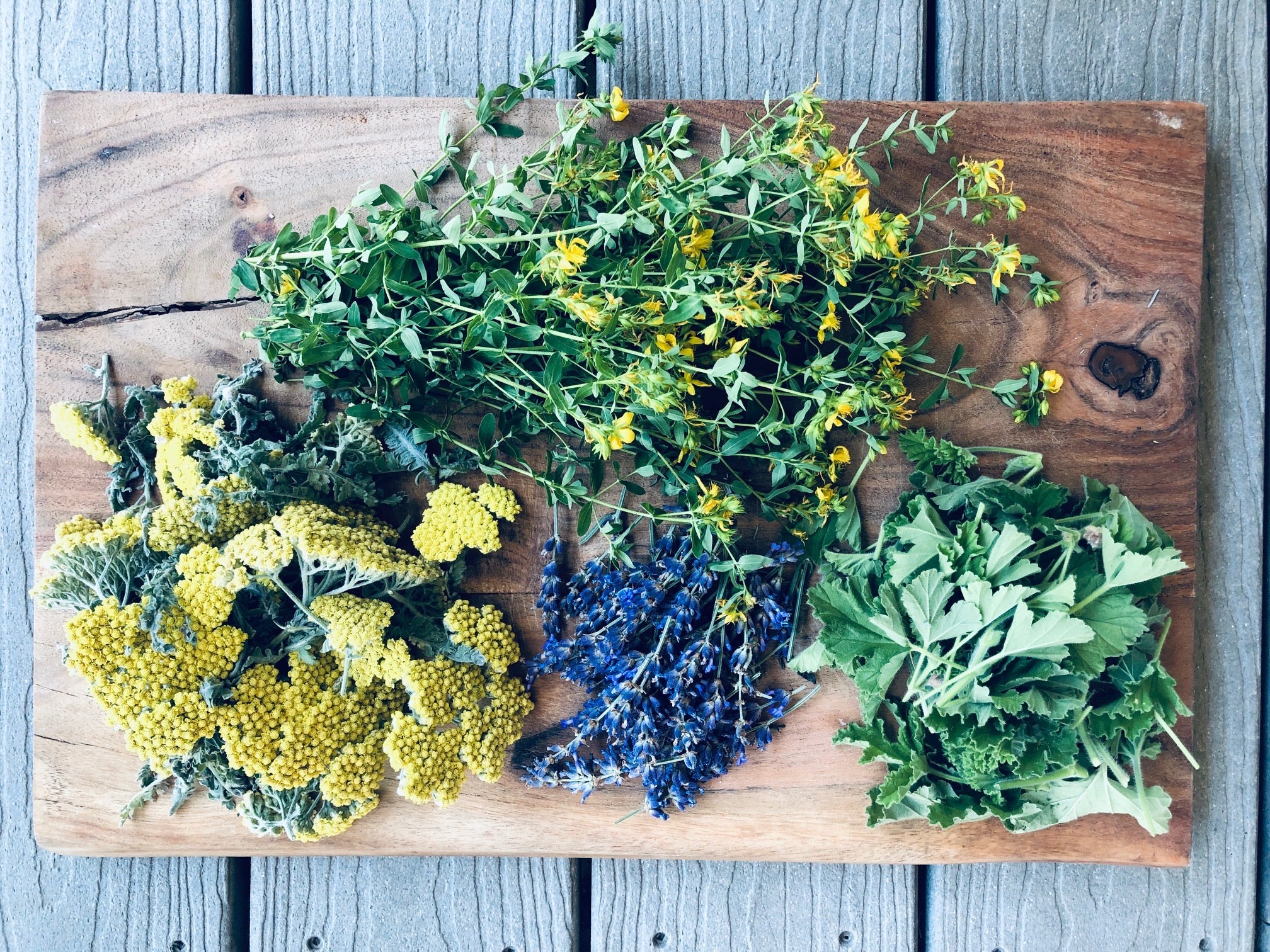
The Ayurvedic Approach to Eye Health
We all know that too much summer sun can burn and upset the balance of our skin but have you ever thought about how the sun can adversely affect your eyes? Over time, exposure to ultraviolet rays from the sun can lead to eye issues such as cataracts and macular degeneration which in turn can impair vision. Beyond the effects of ultraviolet rays, there are other environmental stressors that can upset the balance of our eyes including dust, pollen, wind and low humidity. Lastly, other factors that negatively impact the eyes are excessive screen time, a stressful lifestyle, lack of sleep and/or poor diet. As you can see, there is a lot that can get in the way of your eyes feeling fresh, vibrant and nourished! That’s why we are excited to share with you some Ayurvedic remedies and treatments that will replenish and strengthen your eyes now and throughout your life.
Alochaka Pitta Defined
As previously stated, summertime in particular can be a difficult time of year for eye health due to several factors. First and foremost, according to Ayurveda, summer is considered pitta season because of the fiery qualities of the environment which can cause pitta dosha (composed of fire with a bit of water) to go out of balance more readily. Secondly, the eyes are a pitta organ as they house the pitta subdosha alochaka pitta. What does that mean exactly? Well, the three doshas (vata, pitta and kapha) all have five subdoshas that are located in different areas of the body and all perform specific functions. Alochaka pitta is located in the pupil of the eye and it represents the fire that digests light and visual impressions and its most important function is vision.
When alochaka pitta goes out of balance there is either an increase of the fire element or a decrease in the fire element. When there is an increase of fire in alochaka pitta, it may be a response to the overuse of the eyes due to copious amounts of screen time (on smartphones, tablets and/or computer screens), direct sunlight in the eyes, irritation from environmental stressors, a pitta provoking diet (think spicy, fermented and/or fried foods, caffeine and alcohol), lifestyle choices (stress, lack of sleep and too much intensity), irregular routines or a mixture of all of these factors. The symptoms of increased fire in alochaka pitta can include eye strain, irritation, inflammation and dryness. Ayurvedic treatments to remedy these symptoms will invite in cooling, calming, moisturizing and soothing qualities to counterbalance the excess heat and intensity that the eyes are experiencing. When there is a decrease in alochaka pitta this is most likely due to the aging process. As Dr. Vasant Lad explains, when we approach 40 years old, we become more vulnerable to eye disorders because the strength of alochaka pitta begins to weaken. Ayurvedic remedies for this will focus on strengthening this subdosha of pitta.
Ayurvedic Remedies to Soothe Eye Strain, Irritation, Dry Eye & Inflammation
Cultivate Awareness & Ritual Around Screen Time
The sun emits what is called white light. Within white light, there are different wavelengths that make up the spectrum of light we can see with our eyes. One of the wavelengths is blue light. Blue light is beneficial for humans because it boosts energy, cognitive functioning and mood; however, the artificial blue light we are exposed to through our smartphones, tablets and computers can create eye strain, inflammation, dry eye, fatigue, headaches and insomnia. The reason behind this is that in the digital age, many of us are behind our computer screens or smartphones for hours and hours on end and our eyes are not built to handle this excessive, unnatural exposure to blue light. Prevent Blindness’ website explains that this excessive exposure to blue light, over time, can lead to damaged retinal cells and this can eventually lead to macular degeneration. Macular degeneration causes vision loss and one of its cardinal symptoms is blurred vision. Not only does too much blue light exposure negatively impact our eyes, but it also impacts our sleep patterns too. When we are exposed to blue light leading up to bedtime, it affects our ability to produce melatonin; therefore, we do not get the quality sleep we need for our bodies to heal and re-energize for the day ahead.
So, what to do if you are stuck behind your screen for work and/or to stay connected with your friends & family? Here are some simple tips to help you counterbalance the not-so-stellar effects of artificial blue light:
Take a Break
Every half hour spent behind your screen, take a break and refocus your eyes on a distant object. If there is nature nearby, gaze at the trees, sky, flowers and/or birds to help restore balance to the senses.
Drink Herbal Tea
If you are working feverishly behind your screen(s), take a moment to enjoy a stress reducing cup of tea. Our top PAAVANI recommendations are our Hydrate Blend Tea, designed to moisturize the body and ground nervous energy, our Cool & Calm Blend, formulated to reduce excess pitta in the body and lastly, our Bliss Blend Tea which contains calming brahmi, chamomile, lavender and lemon balm. 
Invest in Blue Light Protection
Blue light screen protectors and glasses, like the ones offered by Ocushield, will block the amount of blue light you are exposed to throughout your day. According to Ocushield, their screen protectors block 90% of blue light between wavelengths 380nm to 420nm and up to 40% blue light from 420 to 500nm. Ocushield glasses and clip-on lenses block 95% of blue light between wavelengths 380nm to 420nm and up to 50% from 420 to 500nm. This is a large amount of protection that will reduce the spike in blue light wavelengths causing eye strain and sleep disturbance. Another way to ensure you get adequate shut eye each night is to switch out your light bulbs for ones that emit less blue light such as the ones sold by Lighting Science.
Ocushield Blue Light Blockers
Medically-rated blue light blockers protect your eyes & help you sleep!
Including options for your smartphone, iPad, monitor, MacBook, face & desk.
Take 20% OFF when you use code: 'PAAVANI' at check out!
Trataka
Trataka is one of the six yogic cleansing practices or Shat Kriyas outlined in the yogic classical text, The Hatha Yoga Pradipika. This cleansing practice is commonly referred to as candle gazing. The idea of trataka is that you focus your awareness on a single point, commonly a flame, in order to harness awareness, concentration, calm the mind and soothe and strengthen the eyes. Traditionally Ayurveda and yoga recommend a ghee candle to perform trataka as it is believed that the golden glow of ghee and its flame will boost immunity as well as soothe the eyes. Trataka is certainly a wonderful way to counterbalance the effects of excess blue light and it is also a way to introduce meditation into your daily routine. To learn more about Trataka and receive step by step directions on how to candle gaze, visit our page dedicated to our Trataka Ghee Candle.
Eye Palming
We absorb and assimilate so much through our eyes and this can become overwhelming and downright stressful not only for our eyes but also our nervous systems. To promote relaxation and soothe overworked alochaka pitta and optic nerves, incorporate eye palming into your day. To perform eye palming, simply find a comfortable seated position in a darkened room and begin to vigorously rub the palms of your hands together until you build some heat. With the eyes closed, place your palms on your eyes. Avoid pressing into the eye sockets or cheekbones. Take several slow, deliberate belly breaths to connect with the grounding quality of earth and cooling quality of water. Keeping the eyes closed, draw your palms away from your eyes and slowly open them when you feel ready.
Floral Water Eye Wash
One of our favorite dinacharya rituals to restore balance to alochaka pitta is to wash the eyes. The most common way Ayurveda recommends to do this is with an eye wash cup and rosewater. Here at PAAVANI, we have taken this idea a step further and have formulated a Floral Water that contains both rose AND lavender. This lovely herbal combination soothes excess heat, moisturizes, clears, refreshes and pampers your peepers! If you have not tried our Floral Water Eye Wash Ritual yet, you will be amazed by the cooling, soothing energy it immediately brings to your eyes. It is a fabulous ritual to do at least once per week or whenever your eyes are feeling dry, fatigued, strained and/or bloodshot. To learn how to do eye washing and the more about the benefits of this practice, hop over to our page, The Eye Wash Ritual.

Castor Oil
One drop of organic, hexane-free, pure castor oil in each eye before bedtime is recommended to soothe irritated, dry, inflamed and/or itchy eyes as this oil contains fatty acids and antibacterial properties which have an immediate effect in restoring balance to the eyes. An added benefit to castor oil eye drops is that the skin around your eyes will be nourished as well as your eyelashes! If you have never used castor oil eye drops, please know that you will experience a little blurriness in the eyes immediately after dropping the oil into each eye; however, the blurriness should go away shortly after application. If for some reason the blurriness in the eyes continues, or you experience any irritation, discontinue the use of castor oil eye drops. This being said, castor oil has immense benefits for the health and wellness of your eyes and we encourage you to explore how this all-natural carrier oil can enhance your inner and outer beauty.
Coconut Milk Compress
To renew fatigued, overworked eyes, you can use a coconut milk compress much like how you would use 2 slices of cucumbers over the eyes. Combine 2 tablespoons of organic, unsweetened coconut milk with one or two droppers full of Floral Water. Dip sterilized cotton balls or gauze into the coconut milk mixture, lay down, close your eyes and rest the compress on your eyelids. Take several rounds of slow, belly breaths and allow your stress to melt away.
Netra Basti
Netra Basti is a traditional Ayurvedic eye treatment where a dough dam is built around each eye and medicated ghee is poured into the dam. The eyes remain open as the oil penetrates the eye, healing a myriad of ailments. Netra Basti is indicated if your eyes are feeling irritated, dry, red, watery, painful, fatigued and/or swollen. This therapy is also used to strengthen vision, slow retinal deterioration and heal glaucoma. Please note, Netra Basti should be done by a qualified Ayurvedic practitioner, specialist and/or doctor.

Shatavari Churna
When there is an overall pitta imbalance in the body, taking a Shatavari churna twice per day will help to cool the hot, fiery qualities of pitta dosha and in turn can nourish and calm excess alochaka pitta. To learn more about Shatavari and how to make Shatavari churna please visit our Shatavari blog post.
Ayurvedic Remedies to Strengthen the Eyes
Eye Exercises
Certain yoga lineages, like Sivananda Yoga, incorporate eye exercises into their teachings in order to improve vision as well as ease stress and tension in the eyes. Here are a few of our favorite eye exercises inspired by our time at the Sivananda Yoga Farm:
Come to a comfortable seated position with your neck long and chin parallel with the floor. Without moving your head or neck, gaze upward to the 12 o’clock position and hold your gaze there for a few seconds. Trying not to blink, bring the gaze down to the 6 o’clock position and hold there for a few seconds. Repeat this series for at least 10 rounds.
After the first eye exercise, you can move to the second. Begin by bringing the gaze to the 3 o’clock position and hold it there for a few seconds, trying not to blink. Next, shift your gaze to the left, to the 6 o’clock position and hold there for a few seconds. Repeat this series for at least 10 rounds.
Bring your gaze back to neutral, looking out into the distance. Bring the gaze back up to the 12 o’clock position and begin to do eye circles, moving from 12 to 1 to 2 to 3 o’clock...making your way all the way back around the clock in a clockwise direction to 12 o’clock. Repeat this for 5 rounds then do 5 more rounds moving in a counterclockwise direction, from 12 o’clock to 11 to 10 to 9 o’clock...making your way all the way back to the 12 o’clock position.
Once these eye exercises are complete, bring your gaze to a neutral position, close the eyes and practice eye palming (see above).
Sun Salutations
Sun salutations are yogic postures where the body and the breath move in unison. As you flow from posture to posture, your dristhi, or focused gaze, will be in a particular position with each movement. Dristhi is beneficial to help focus the mind and practice pratyhara, or the withdrawal of the senses. When we draw our senses inward, the sun salutations become not only a form of exercise but a form of meditation. Hence, as Dr. Lad explains in his book, The Complete Book of Ayurvedic Home Remedies, practicing sun salutations with awareness is a beautiful way to relieve stress and tension in the eyes as well as calm the nervous system. To learn how to do sun salutations, please visit our Ayurvedic Yoga Blog. Please note, we also believe that any form of Yoga is a positive way to soothe and strengthen the eyes including Ashtanga, Vinyasa, Hatha, Yin or Restorative Yoga.
Netra Basti (please read above)
Trataka (please read above)
Triphala Eye Wash
Another method of cleansing the eyes in Ayurveda is to create a Triphala eye wash. This eye washing method is particularly strengthening for the eyes because Triphala contains the herbs haritaki, amalaki and bibhitaki. These herbs work synergistically to strengthen alochaka pitta. Amalaki in particular is a wonderful rejuvenative herb for the eyes as it contains Vitamin C which counteracts oxidative stress which the eyes experience due to environmental and lifestyle stressors.
To perform a Triphala Eye Wash, you will need a ½ teaspoon of Triphala powder blended with 8oz of fresh, boiling water. Allow this mixture to infuse for 8 hours or overnight. Once infused, strain the Triphala sediment out with a double or triple fold of cheesecloth. (You want to ensure there is no lingering Triphala sediment because you do not want that in your eyes, so feel free to strain the infusion through the cheesecloth 1-3 times). Fill your eye wash cup with the Triphala-infused water and proceed to wash each eye.

Ayurveda & the Eyes
We do so much to maintain the health and vitality of our physical bodies through skin care, oral hygiene, cleaning the ears, manicures, pedicures and hair treatments but somehow we seem to neglect caring for our eyes. If you think about it, this fact is really quite surprising because our eyes do so much for us each and every day. They allow us to gaze into the eyes of loved ones and experience the world around us as we learn, read and grow and, like the rest of our body, our eyes need self-care too. We hope that this list of Ayurvedic remedies inspires you to nourish and strengthen your eyes so that they may continue to be the window to your soul and help you to cultivate a deeper connection with the beauty which is all around us.






4 comments
@Denise – thank you for your question!
The primary care for blefarites involves warm compresses and gentle cleaning of eyelid margins with diluted cleansers or specialized eyelid wipes recommended by doctors. Please note that our Floral Water & Rose Water can be used as soothing rinses after cleaning with a specialized cleanser or wipe prescribed by your doctor. We hope this helps!
PAAVANI Ayurveda
Would you please let me know which product do you recommend for blefarites? Thank you
Denise
@nirmala Great question! Yes, Triphala churna and/or Triphala eye wash can help strengthen alochaka pitta by strengthening the muscles of the eyes and thus improving vision. It can also help to reduce excess/high alochaka pitta because it soothes red, dry eyes associated with high alochaka pitta and Triphala works to rejuvenate the eyes.
PAAVANI Ayurveda
Thank you for your very informative and useful article.
I have a doubt regarding Triphala Choorna. Is it to be used only if the alochaka pitta is weak or can it be used to reduce a high alochaka pitta too?
Nirmala
Leave a comment
This site is protected by hCaptcha and the hCaptcha Privacy Policy and Terms of Service apply.